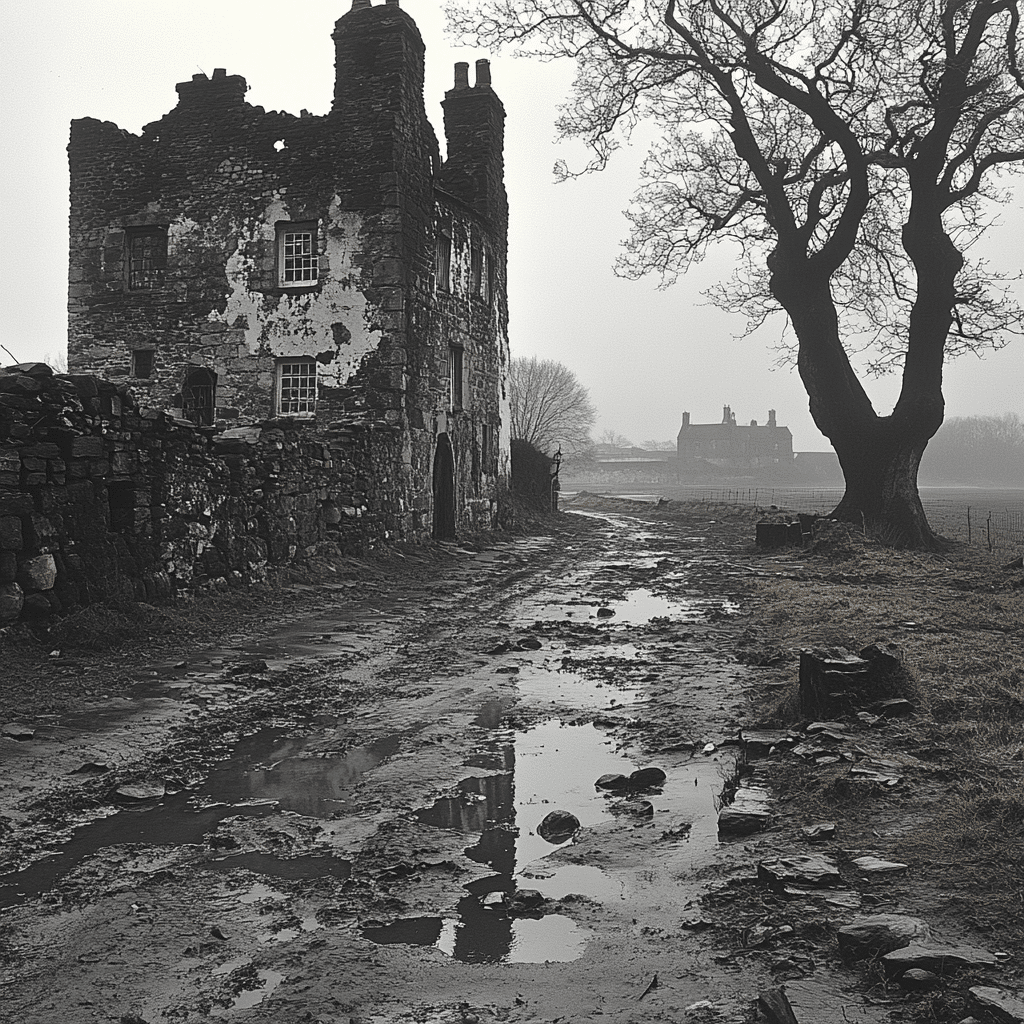Discovering Conisbrough: A Historic Marvel in Modern Times
Nestled in South Yorkshire, Conisbrough Castle stands as an awe-inspiring testament to both medieval ingenuity and contemporary preservation. This iconic structure, with a history stretching back to the Norman Conquest, offers a fascinating glimpse into England’s storied past. From its towering keep to its strategic fortifications, Conisbrough Castle’s significance extends beyond its historical roots, serving as a vital player in regional tourism, education, and the community’s cultural identity. This article delves into the multifaceted allure of Conisbrough Castle, examining its unique architectural features, intriguing legends, contemporary role, and innovative moves into the 21st century.
Architectural Wonders: The Design and Structure of Conisbrough Castle
Conisbrough Castle, a paragon of medieval military architecture, showcases the remarkable design skills of the 12th century. Built under the direction of Hamelin Plantagenet in the 1170s or 1180s, the castle’s most striking feature is its cylindrical keep, constructed from magnesian limestone. This keep is one of the finest examples of late 12th-century “great towers” in South Yorkshire and possibly all of England, marked by both architectural refinement and a unique design.
The castle’s defensive prowess is equally notable. The curtain walls, strategic gatehouses, and surrounding moats reflect a level of military sophistication that rivals other formidable structures like Warwick Castle and the Tower of London. Conisbrough Castle’s keep, however, stands out for its aesthetic appeal and innovative use of the surrounding environment, showcasing not just defensive strength but also architectural elegance.

| Aspect | Details | |
| Location | South Yorkshire, England | |
| Key Landmark | Conisbrough Castle | |
| Significance | Magnificent keep is one of South Yorkshire’s most striking landmarks; center of a great Norman lordship | |
| Historical Background | Given by William the Conqueror to William de Warenne | |
| Construction Period | The keep was probably built in the 1170s or 1180s | |
| Architectural Importance | – Best surviving example of medieval military architecture in South Yorkshire | |
| – Perfect example of a late 12th-century ‘great tower’ | ||
| – Highest architectural refinement with a unique design | ||
| Community Impression | Positive Aspects | Challenges |
| – Picturesque setting | – Limitations in amenities | |
| – Strong community spirit | – Occasional safety concerns | |
| Tourism Appeal | – Historical charm attracts visitors | |
| Public Opinion | Mixed: Some praise the setting and community, others note amenity and safety struggles | |
| Date of Information | May 18, 2024 |
Legends and Lore: Mysteries Surrounding Conisbrough Castle
Conisbrough Castle is steeped in legends that continue to captivate the imagination. One of the most enduring tales is that of Lady Isabella’s ghost, reputed to wander the castle’s grounds under moonlit skies. This story, debated by historians and lore enthusiasts alike, adds a layer of eerie charm to the ancient walls and draws curious visitors who revel in the mystery.
Another popular legend involves secret tunnels supposedly connecting Conisbrough Castle to other historical sites in South Yorkshire. While these tunnels have yet to be confirmed by archaeological evidence, the myth contributes to the castle’s mystique, sparking endless fascination and speculation. Such stories, whether rooted in fact or fiction, enrich the cultural fabric of Conisbrough and keep the town’s history vividly alive.
Conisbrough’s Castle in Recent Times: A Pillar of the Community
In recent decades, Conisbrough Castle has transformed into a dynamic center of community activity and learning. It hosts a myriad of events, from medieval reenactments and community fairs to educational school field trips, each offering a tangible connection to history for locals and tourists alike. Notable among these events is the Conisbrough Music Festival, which has featured renowned acts like the Arctic Monkeys and Pulp, making the castle a lively hub of cultural engagement.
The castle also plays a significant role in academic research. Recent excavations, often in collaboration with the University of Sheffield, have provided deeper insights into the castle’s construction and its strategic importance during the Wars of the Roses. This ongoing research ensures that Conisbrough Castle remains an active subject of historical study and a point of pride for the local community.

Embracing the Future: Modern Endeavors at Conisbrough Castle
Conisbrough Castle is not merely a relic of the past; it is at the forefront of integrating technology to enhance visitor experiences. The introduction of augmented reality (AR) tours allows guests to step back in time and witness historical reconstructions, making the past accessible in a vividly engaging manner. Collaborations with tech giants like Microsoft have further enriched the castle experience, featuring interactive exhibits that provide in-depth historical context and education.
Sustainability is another key focus for the castle’s management. Efforts to promote eco-friendly practices ensure that this historic landmark can be preserved and enjoyed by future generations. By embracing both innovation and sustainability, Conisbrough Castle sets a benchmark for how historical sites can remain relevant in today’s fast-paced world.
Conisbrough: A Timeless Legacy
Conisbrough Castle is more than a tourist attraction; it’s an essential piece of South Yorkshire’s cultural and historical identity. Whether visitors are drawn by the stunning architecture, enchanted by the legends, or inspired by the community’s spirit, the castle embodies a bridge between the past and the present.
Modern advancements like augmented reality tours seamlessly integrate historical education with contemporary technology, offering visitors an immersive experience (explore related tech innovations like the tiny house on Wheels trend on a broader scale). Meanwhile, ongoing research and community events ensure that Conisbrough Castle remains not just a monument of the past but a living, breathing part of today’s world. This timeless legacy continues to evolve, offering fresh insights and new adventures with each passing year.
From its majestic keep to its storied grounds, Conisbrough Castle stands proudly as South Yorkshire’s gem, inviting all to explore, celebrate, and preserve its rich history. Whether you are delving into the current interest rates for mortgages in the area or simply seeking an enriching day out, Conisbrough Castle offers a profound connection to both history and modernity, embodying a timeless legacy that truly makes it a shining gem of South Yorkshire.
Discovering Conisbrough: A Treasure Trove of Fun Facts
Historical Tidbits
Conisbrough Castle’s history is as dramatic as any soap opera – think Game of Thrones, but real! Built in the 12th century by Hamelin Plantagenet, an illegitimate half-brother of King Henry II, the castle has witnessed centuries of drama. Its name, derived from Old English Cyningesburh, translates to “King’s stronghold,” which is quite fitting given its storied royal connections.
Speaking of connections, did you know that various figures throughout history have left their marks on Conisbrough? For instance, the Normans significantly rebuilt the castle, transforming it into a fortified keep. This same lineage of craftsmanship can be seen in places like Colleges in Tameside, where medieval influences persist in some historical buildings. As you wander through Conisbrough’s ruins today, you’re essentially walking in the footsteps of royalty.
Architectural Wonders
Conisbrough Castle isn’t just a relic – it’s a marvel of medieval engineering. The cylindrical keep is particularly noteworthy, featuring buttressed walls up to 15 feet thick, designed to withstand even the fiercest sieges. This keep is one of the best-preserved Norman cylindrical towers in England!
It seems fitting to ponder how advances in architecture and construction have evolved, much like changes we’ve seen with the current interest rate For mortgage rates over time. Each stone and mortar placed in this robust structure symbolize calculated risks, much like decisions in banking and housing today. These connections make you realize how history and modernity aren’t so disparate after all.
Cultural Connections
Interestingly enough, Conisbrough has inspired various cultural works over the years. Sir Walter Scott’s 1819 novel, “Ivanhoe,” references Conisbrough Castle extensively, showcasing its literary significance. Artists and writers alike have drawn inspiration from its stately presence and storied past.
And while we’re on the topic of inspiration, ever heard of Ann Nesby and her powerful performances? Just like Conisbrough Castle, she captivates her audience, leaving an indelible mark that’s hard to forget. On the other hand, actor Kevin Kilner, with his numerous roles, similarly leaves a lasting impression, much like the resilient walls of Conisbrough Castle stand the test of time. These cultural connections deepen our appreciation and understanding of this historical gem.
Fun and Quirky Facts
But that’s not all. The castle’s grounds have been rumored to be haunted, with ghost sightings adding a layer of mystery to the majestic structure. Imagine visiting on a foggy evening and encountering one of its spectral inhabitants; it’s like a scene out of an eerie ghost story!
For the curious minds, Conisbrough isn’t just about ancient tales. It’s also worth noting that bizarre yet fascinating topics like Images Of period blood Clots have been surprisingly linked to health discussions related to medieval times. This weird tidbit might seem out of place, but it shows how life’s little curiosities often find a way to weave into our understanding of history.
So, the next time you’re in South Yorkshire, make a pitstop at Conisbrough. Whether you’re a history buff or just love a good spooky story, there’s something here for everyone. Plus, you might find out more intriguing tidbits, like how to leave a tip with a card in various European destinations, bringing modern travel etiquette to your historical explorations.

What is Conisbrough famous for?
Conisbrough is famous for its magnificent keep at Conisbrough Castle, one of South Yorkshire’s most striking landmarks and a fine example of late 12th-century Norman military architecture.
Is Conisbrough a nice area?
Opinions are mixed. Some folks love its picturesque setting and tight-knit community spirit, while others feel it lacks certain amenities and express occasional safety concerns.
Why is Conisbrough Castle important?
Conisbrough Castle is important because it’s one of the best surviving examples of medieval military architecture in South Yorkshire, showcasing unique and refined design from the late 12th century.
How many people live in Conisbrough?
Conisbrough has a population of about 15,000 people, making it a small yet vibrant community.
What did Conisbrough Castle look like?
Conisbrough Castle, highlighted by its impressive keep, boasts a unique design with remarkable architectural refinement, typical of the late 12th century.
Did Doncaster have a castle?
Doncaster did have a castle. It was located in the town center, but only ruins remain today.
What is the posh area near Doncaster?
Around Doncaster, a posh area would be Bawtry. It’s known for its upscale shops, restaurants, and overall stylish vibe.
Where is the best place to live in Doncaster?
Bessacarr is widely considered one of the best places to live in Doncaster due to its blend of mature and newer homes, green spaces, and good local amenities.
What are the villages in Doncaster?
Some of the villages in Doncaster include Armthorpe, Rossington, and Tickhill, each with its own unique character and community feel.
Why is Neuschwanstein castle important?
Neuschwanstein Castle is important because it’s an iconic fairy-tale castle in Germany, known for its stunning beauty and being the inspiration for Disney’s Sleeping Beauty Castle.
What is the biggest castle grounds in the world?
The biggest castle grounds in the world are the Malbork Castle grounds in Poland, sprawling over a large area and showcasing Gothic architecture.
Why were castles built on hilltops?
Castles were often built on hilltops for strategic reasons, providing a defensive advantage by making the structure harder to attack and easier to defend.
Is Conisbrough a town or village?
Conisbrough is a town located in South Yorkshire, England, known for its rich history and beautiful castle.
What is the largest city in South Yorkshire?
Sheffield is the largest city in South Yorkshire, known for its industrial heritage and vibrant cultural scene.
Is Doncaster bigger than Sheffield?
Doncaster is not bigger than Sheffield. Sheffield has a larger population and a more extensive urban area compared to Doncaster.



